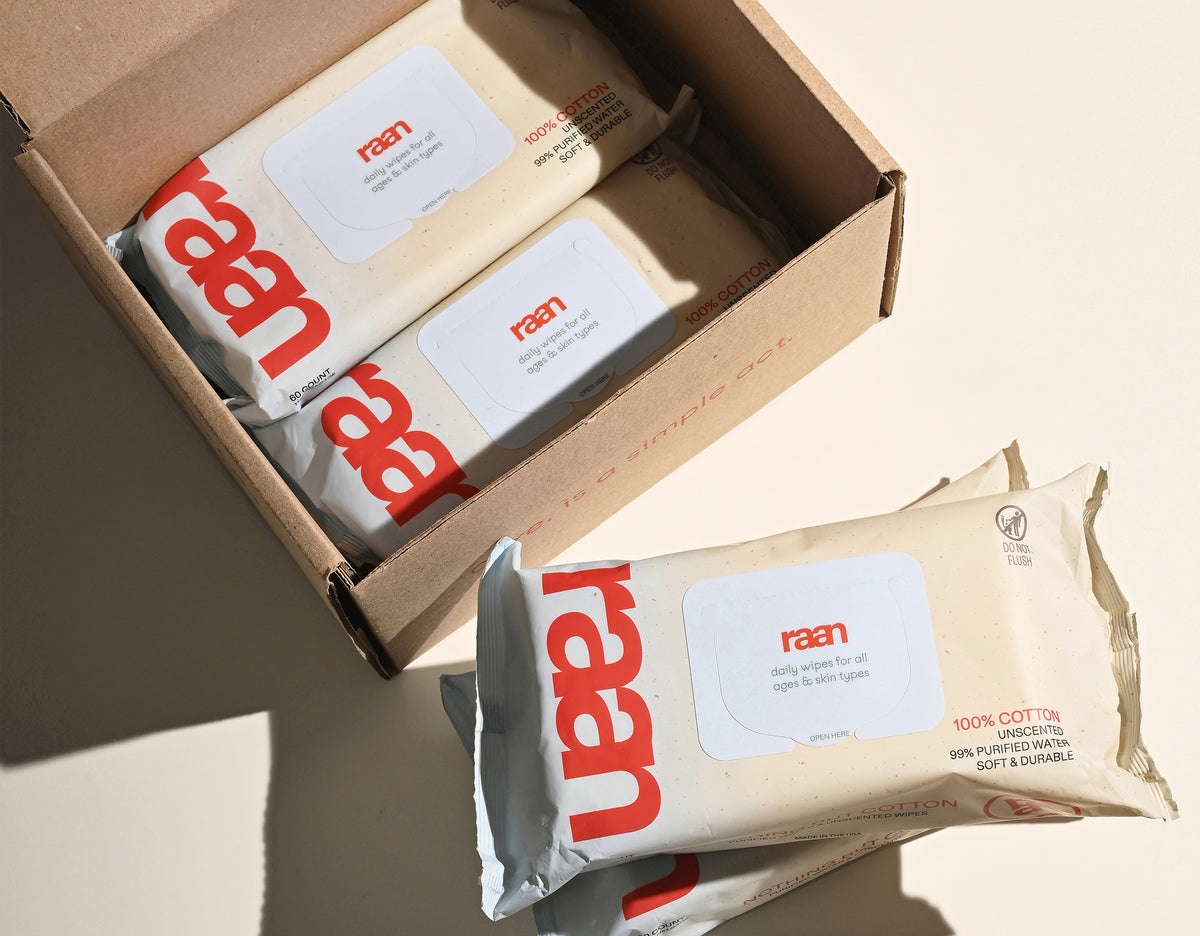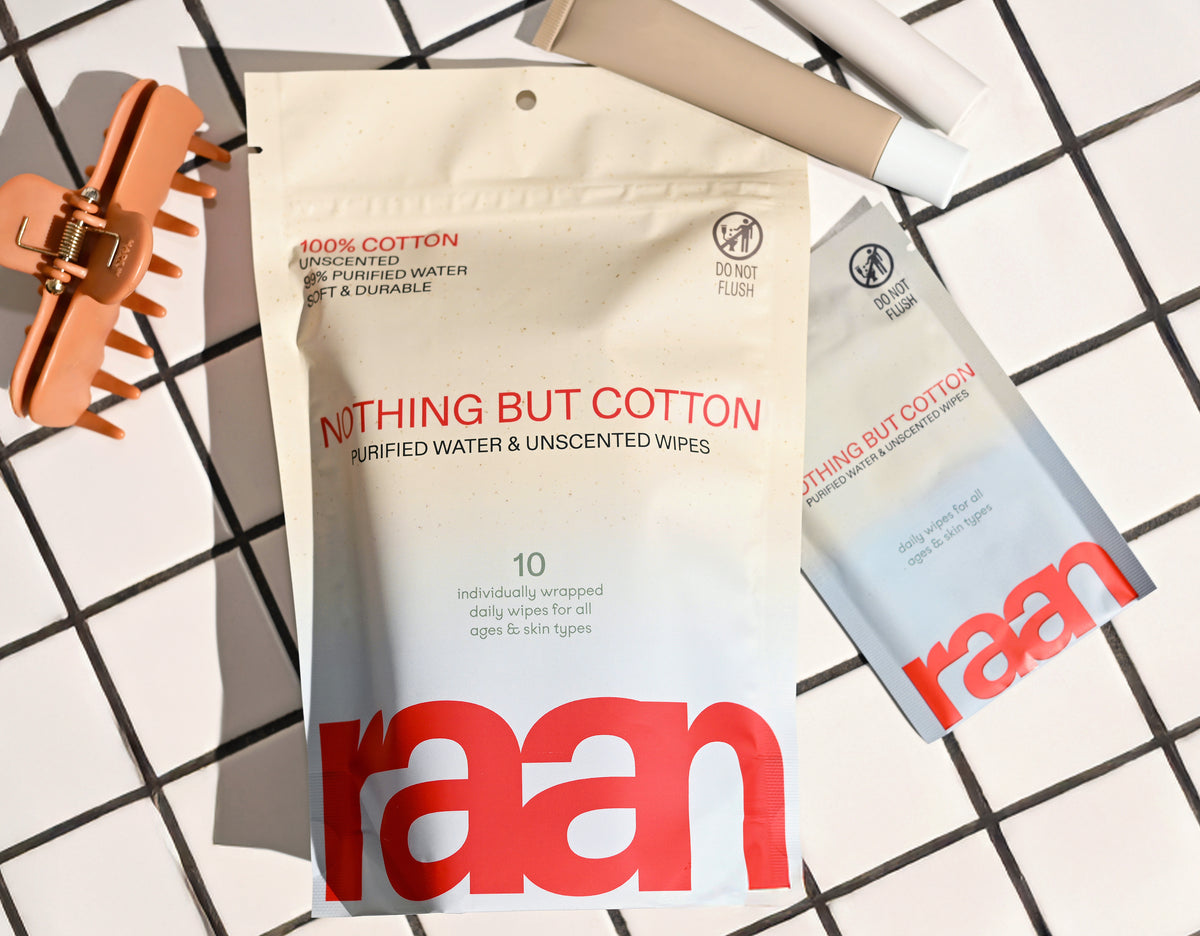When Your Face Scratches: Understanding Sensitive Skin and Safe Care
Whether it's an accidental scratch from a pet, a moment of absent-minded scratching, or the result of sensitive skin that reacts to everything, facial scratches happen to all of us. The difference lies in how we care for our skin afterward — and that's where most conventional products fall short.
Key Takeaways
- Gently cleanse your face with unscented products to protect sensitive skin after scratches.
- Keep your nails short to prevent further irritation or damage to scratched skin.
- Use fragrance-free moisturizers and avoid harsh ingredients like alcohol and synthetic fragrances.
- Clean your hands thoroughly before touching your face to reduce the risk of infection.
- Apply cool compresses to soothe irritation and provide immediate relief.
Table of Contents
- When Your Face Scratches: Understanding Sensitive Skin and Safe Care
- What Causes Facial Scratches and Irritation
- Immediate Care When You Scratches Face
- Healing and Ongoing Treatment for Facial Scratch Marks
- Managing Itchy Skin on the Face
- Choosing Products for Scratched and Sensitive Skin
- Special Cases and Complications
- Building Resilient Skin for Future Protection
- Moving Forward with Confidence
Your face deserves more than products packed with synthetic preservatives, plastic fibers, and vague "gentle" claims. When your face scratches, whether from dryness, irritation, or an accident, you need care that's genuinely safe and transparent about what's touching your skin.
The reality is that most wipes and cleansers marketed for sensitive skin contain ingredients that can actually worsen irritation. Synthetic fragrances, bleached materials, and harsh preservatives don't belong anywhere near compromised skin — yet they're standard in products claiming to be "gentle" or "hypoallergenic."
This guide focuses on practical, science-backed approaches to caring for scratched or irritated facial skin. We'll cover immediate care steps, ongoing treatment strategies, and how to choose products that actually support healing rather than hinder it.
The key isn't complicated skincare routines or expensive treatments — it's understanding what your skin needs and avoiding what it doesn't. That means knowing exactly what's in the products you use and why each ingredient matters.
What Causes Facial Scratches and Irritation

Understanding why you get face scratches starts with recognizing the most common triggers. Unlike body skin, facial skin is constantly exposed to environmental factors, making it more vulnerable to irritation and damage.
Common Sources of Facial Scratches
Accidental scratches happen more often than you'd think. Pets, jewelry, fingernails during sleep, or even rough towels can create minor wounds that need proper care. These typically appear as linear marks and may bleed slightly.
Self-inflicted scratching often results from underlying skin conditions. Dry skin, eczema, allergic reactions, or even stress can trigger the urge to scratch. This creates a cycle where scratching leads to more irritation, which leads to more scratching.
Product reactions are increasingly common as skincare routines become more complex. New cleansers, moisturizers, or even laundry detergents can cause itching that leads to scratching. The problem compounds when people use harsh products to "fix" the initial reaction.
Why Some Skin Scratches More Easily
Sensitive skin isn't just about genetics — it's often about barrier function. When your skin's protective barrier is compromised, it loses moisture more easily and becomes more reactive to external irritants.
Common barrier disruptors include over-cleansing, harsh weather, synthetic fragrances, and products with high pH levels. Even seemingly innocent ingredients like essential oils or botanical extracts can trigger reactions in sensitive individuals.
Age also plays a role. Children's skin is naturally thinner and more permeable, while mature skin produces less oil and may be more prone to dryness and irritation.
When Scratches Become Problematic
Most minor facial scratches heal within 3-7 days with proper care. However, certain factors can complicate healing and increase the risk of scarring or infection.
Depth matters: Surface scratches that only affect the outer layer of skin heal fastest. Deeper scratches that reach the dermis take longer and have higher scarring potential.
Location affects healing: Scratches around the eyes, mouth, or nose heal more slowly due to constant movement and higher bacteria exposure.
Continued irritation from harsh products, sun exposure, or repeated scratching can turn a minor scratch into a persistent problem. This is where product choice becomes crucial.
The goal isn't to avoid all scratches — that's impossible. Instead, it's about responding appropriately when they happen and creating conditions that support natural healing. This starts with understanding what your skin actually needs, not what marketing claims promise.
Most importantly, recognize that healing scratched facial skin requires gentleness above all else. The instinct to "treat" aggressively often backfires, leading to more irritation and delayed healing. Sometimes the best approach is simply getting out of your skin's way and letting it do what it's designed to do.
Immediate Care When You Scratches Face
The first few minutes after a facial scratch can determine how well and quickly your skin heals. The key is gentle, thorough cleaning without over-treating or using products that could worsen irritation.
Step 1: Clean Your Hands First
Before touching your face, wash your hands thoroughly with unscented soap and warm water. This seems obvious, but it's the step most people skip when they're focused on the scratch itself.
Dirty hands introduce bacteria to broken skin, increasing infection risk. Even if the scratch seems minor, treating it with the same care you'd give a larger wound prevents complications later.
Step 2: Assess the Scratch
Look at the scratch in good lighting to determine its depth and extent. Surface scratches that don't bleed or bleed minimally can be treated at home. Deeper scratches that gape open, won't stop bleeding after 10 minutes of pressure, or contain debris may need professional care.
For most minor scratches, you'll see some redness and possibly small amounts of blood. This is normal and indicates your skin's healing response is already beginning.
Step 3: Clean the Area Gently
Use clean, room-temperature water to rinse the scratch. Avoid hot water, which can increase inflammation and damage already compromised skin.
If you need more than water, choose a gentle, fragrance-free cleanser. Avoid alcohol-based products, hydrogen peroxide, or anything with synthetic fragrances — these can delay healing and increase scarring risk.
Pat the area dry with a clean towel. Don't rub, which can reopen the scratch or cause additional irritation.
Step 4: Address Any Bleeding
For minor bleeding, apply gentle pressure with a clean cloth or tissue. Most facial scratches stop bleeding within a few minutes.
If bleeding continues beyond 10 minutes or seems excessive for the scratch size, seek medical attention. This could indicate the scratch is deeper than it appears or that you have a clotting issue.
What Not to Do
Avoid the urge to "disinfect" with harsh products. Rubbing alcohol, hydrogen peroxide, and iodine can actually slow healing by damaging healthy tissue around the scratch.
Don't pick at forming scabs or try to remove debris yourself if it's embedded in the skin. This can worsen the injury and increase scarring risk.
Skip products with synthetic fragrances, dyes, or complex ingredient lists. When skin is compromised, it's more likely to react to ingredients it normally tolerates.
The goal of immediate care is simple: clean the area, stop any bleeding, and protect the scratch from further damage. Resist the temptation to do more — over-treatment often causes more problems than the original scratch.
Healing and Ongoing Treatment for Facial Scratch Marks

Once you've handled the immediate care, the focus shifts to creating optimal conditions for healing. This phase determines whether your scratch heals cleanly or becomes a lasting mark on your skin.
The key principle is supporting your skin's natural healing process without interfering with it. Your skin knows how to repair itself — it just needs the right environment and protection from further damage.
Choosing Safe Cleaning Products
When your face scratches, what you clean it with matters more than how often you clean it. Most conventional wipes and cleansers contain ingredients that can actually slow healing and increase irritation.
Look for products made from natural materials like unbleached cotton rather than synthetic fibers. Plastic-based wipes can be too rough for compromised skin and may leave microscopic fibers that irritate healing tissue.
The ingredient list should be short and transparent. Avoid products with synthetic fragrances, parabens, or complex preservative systems. Food-grade preservatives like sodium benzoate and potassium sorbate are gentler alternatives that still prevent bacterial growth.
Water content matters too. Products that are 99% water provide effective cleaning without the harsh detergents found in many "gentle" cleansers. This is especially important for facial scratches, where over-cleansing can strip the skin's protective barrier.
Moisturizing Healing Skin
Proper hydration is crucial for healing, but not all moisturizers are suitable for scratched skin. Heavy creams or products with active ingredients like retinol or acids should be avoided until healing is complete.
Look for simple, fragrance-free moisturizers with ingredients like organic aloe, which has natural anti-inflammatory properties. Avoid products with essential oils or botanical extracts, which can cause reactions in sensitive or compromised skin.
Apply moisturizer gently with clean hands, using patting motions rather than rubbing. The goal is to create a protective barrier that prevents moisture loss while allowing the skin to breathe.
Preventing Infection and Complications
Signs of infection include increased redness, warmth, swelling, or pus. If you notice any of these symptoms, especially if they worsen after the first 24-48 hours, seek medical attention.
Prevention is simpler than treatment. Keep the area clean with gentle products, avoid touching the scratch with dirty hands, and don't pick at forming scabs. The urge to "help" healing by removing scabs often leads to scarring and delayed recovery.
Sun protection is crucial during healing. UV exposure can cause permanent pigmentation changes in healing skin. Use a gentle, mineral-based sunscreen or simply avoid direct sun exposure until the scratch has fully healed.
Managing Itching During Healing
Itching is a normal part of healing, but scratching can reopen wounds and lead to scarring. Instead of scratching, try applying a cool, damp cloth to the area for 10-15 minutes.
If itching is severe, over-the-counter antihistamines can help. However, avoid topical anti-itch creams that contain benzocaine, lidocaine, or other "caine" ingredients, which can cause allergic reactions in some people.
Keep fingernails short and consider wearing gloves at night if you tend to scratch in your sleep. This simple step prevents accidental damage to healing skin.
When to Modify Your Skincare Routine
Your regular skincare routine likely needs adjustment while your scratch heals. Pause any products containing acids, retinoids, or exfoliating ingredients. These can irritate healing skin and increase sensitivity.
Stick to gentle cleansing and basic moisturizing until healing is complete. This isn't the time to try new products or treatments — compromised skin is more likely to react to ingredients it normally tolerates.
Resume your full routine gradually once the scratch has healed completely. Start with one product at a time to identify any that might cause irritation.
Managing Itchy Skin on the Face
Facial itching often leads to scratching, creating a cycle that can damage your skin and delay healing. Understanding what causes the itch is the first step toward breaking this pattern.
Common Causes of Facial Itching
Dry skin is the most frequent culprit behind facial itching. When your skin's barrier function is compromised, it loses moisture more easily and becomes more sensitive to environmental irritants.
Product reactions are increasingly common as skincare routines become more complex. New cleansers, moisturizers, makeup, or even laundry detergents can trigger itching. The problem often compounds when people use multiple products to address the initial reaction.
Environmental factors like low humidity, air conditioning, heating, and pollution can also trigger facial itching. Seasonal changes often worsen symptoms, particularly during winter months when indoor heating reduces humidity levels.
Underlying skin conditions like eczema, seborrheic dermatitis, or contact dermatitis can cause persistent itching. These conditions often require specific management strategies beyond basic skincare.
Effective Itch Relief Strategies
Cool compresses provide immediate relief for many people. Apply a clean, damp cloth to the itchy area for 10-15 minutes. The cooling sensation can interrupt itch signals and provide temporary relief.
Gentle moisturizing immediately after cleansing helps lock in hydration and strengthen the skin barrier. Choose fragrance-free products with simple ingredient lists to minimize reaction risk.
Oral antihistamines can help with itching caused by allergic reactions or general inflammation. However, they're most effective when taken consistently rather than as needed.
| Itch Relief Method | Best For | How Long It Lasts | Considerations |
|---|---|---|---|
| Cool Compress | Immediate relief | 15-30 minutes | Safe for all skin types |
| Gentle Moisturizer | Dry skin itching | 2-4 hours | Choose fragrance-free options |
| Oral Antihistamine | Allergic reactions | 4-6 hours | May cause drowsiness |
| Humidifier | Environmental dryness | Ongoing | Requires regular cleaning |
Breaking the Itch-Scratch Cycle
The more you scratch, the more you want to scratch. This happens because scratching releases histamine, which triggers more itching. Breaking this cycle requires conscious effort and alternative strategies.
Keep fingernails short and filed smooth to minimize damage if you do scratch. Consider wearing soft gloves, especially at night when unconscious scratching is more likely.
Distraction techniques can be surprisingly effective. When you feel the urge to scratch, try applying pressure with your palm instead, or engage in an activity that occupies your hands.
Stress management plays a role too. Stress can worsen itching and make it harder to resist scratching. Regular exercise, adequate sleep, and stress reduction techniques can help manage symptoms.
When Itching Signals Bigger Issues
Persistent itching that doesn't respond to basic care may indicate an underlying condition that needs professional attention. Eczema, psoriasis, and other chronic skin conditions often start with unexplained itching.
Sudden onset of severe itching, especially if accompanied by rash, swelling, or difficulty breathing, could signal an allergic reaction requiring immediate medical attention.
Itching that interferes with sleep or daily activities, or that leads to skin damage from scratching, warrants a dermatologist consultation. Professional treatment can often provide relief when home remedies aren't sufficient.
The goal isn't to eliminate all itching — some degree of sensation is normal, especially during healing. Instead, focus on managing symptoms while addressing underlying causes. This approach provides lasting relief rather than temporary fixes.
Choosing Products for Scratched and Sensitive Skin

When your skin is compromised from scratching, product selection becomes critical. What you put on your skin can either support healing or prolong irritation and delay recovery.
The key is understanding that "gentle" and "sensitive skin" labels don't guarantee safety. Many products marketed for sensitive skin contain ingredients that can actually worsen irritation in compromised skin.
Ingredients to Avoid When Skin Is Scratched
Synthetic fragrances top the list of problematic ingredients. Even products labeled "hypoallergenic" often contain fragrance compounds that can trigger reactions in sensitive or damaged skin.
Harsh preservatives like parabens, formaldehyde releasers, and methylisothiazolinone can cause contact dermatitis, especially in compromised skin. These ingredients are common in conventional wipes and cleansers.
Alcohol-based products should be avoided entirely. While they may feel cooling initially, alcohol strips the skin's protective barrier and can significantly slow healing.
Essential oils and botanical extracts, while natural, can be highly irritating to scratched skin. Lavender, tea tree, and citrus oils are particularly problematic for sensitive individuals.
Safer Ingredient Alternatives
Food-grade preservatives like sodium benzoate and potassium sorbate provide effective antimicrobial protection without the harsh effects of synthetic alternatives. These ingredients are gentle enough for broken skin while still preventing bacterial growth.
Organic aloe provides natural anti-inflammatory benefits and helps maintain skin hydration. Unlike synthetic moisturizers, aloe is less likely to cause reactions and actually supports the healing process.
Unbleached, natural cotton is gentler than synthetic materials or bleached fabrics. When you scratches face, the physical texture of what touches your skin matters as much as the chemical ingredients.
High water content (99% or more) ensures effective cleaning without harsh detergents. This is especially important for facial scratches, where over-cleansing can strip the skin's protective barrier.
Reading Product Labels Effectively
Ingredient lists are required to be in descending order by concentration. If water isn't the first ingredient in a cleansing product, it likely contains high levels of other compounds that might irritate sensitive skin.
Look for specific certifications like EWG Verified, which indicates independent testing for safety and transparency. These certifications provide more assurance than marketing claims alone.
Avoid products with long ingredient lists or complex chemical names you can't pronounce. When skin is compromised, simpler formulations are generally safer and more effective.
Pay attention to packaging too. Products in hard plastic containers often contain more preservatives to maintain stability. Flexible packaging with minimal plastic can indicate a gentler formulation.
The goal is finding products that clean effectively without adding unnecessary irritants. This often means choosing items with shorter ingredient lists, transparent sourcing, and third-party safety verification rather than relying on marketing claims alone.
Special Cases and Complications
While most facial scratches heal without incident, certain situations require modified care approaches or professional intervention. Recognizing these scenarios early can prevent complications and ensure proper healing.
Identifying and Treating Infected Facial Scratches
Infection signs typically appear 24-48 hours after the initial injury. Look for increasing redness that spreads beyond the scratch area, warmth to the touch, swelling, and any pus or unusual discharge.
Red streaking extending from the scratch site is a serious warning sign that requires immediate medical attention. This indicates the infection may be spreading through your lymphatic system.
If you suspect infection, avoid home remedies and over-the-counter antibiotic ointments, which can sometimes worsen the situation. Instead, keep the area clean with gentle, unscented products and seek professional medical care promptly.
Prevention remains the best strategy. Use clean hands when touching the area, avoid picking at scabs, and maintain consistent gentle cleansing with products designed for sensitive skin.
When Scratches Won't Heal Properly
Most facial scratches should show improvement within 3-5 days. If healing stalls or the scratch appears unchanged after a week, several factors might be interfering with recovery.
Repeated irritation from harsh products, continued scratching, or underlying skin conditions can significantly delay healing. Sometimes what appears to be a non-healing scratch is actually an ongoing skin reaction masquerading as a wound.
Certain medications, particularly blood thinners and some acne treatments, can slow healing. If you're taking prescription medications and notice delayed healing, consult your healthcare provider about potential interactions.
Nutritional factors play a role too. Deficiencies in vitamin C, zinc, or protein can impair skin repair. While supplements aren't necessary for most people, ensuring adequate nutrition supports optimal healing.
Preventing Permanent Scarring and Pigmentation Changes
Facial skin is more prone to scarring and pigmentation changes than other body areas due to its thinner structure and constant sun exposure. However, most minor scratches won't leave permanent marks with proper care.
Sun protection is crucial during healing. UV exposure can cause post-inflammatory hyperpigmentation, leaving dark spots that persist long after the scratch heals. Use mineral sunscreen or avoid direct sun exposure entirely during the healing process.
Resist the urge to pick at scabs or "help" the healing process. Scabs form to protect underlying tissue while new skin develops. Removing them prematurely often leads to deeper wounds and increased scarring risk.
Once initial healing is complete, gentle massage with a fragrance-free moisturizer can help minimize scar tissue formation. This should only be done after the wound has fully closed and any scabs have fallen off naturally.
Using Makeup Over Healing Scratches
Covering facial scratches with makeup is tempting, but timing and product selection matter significantly. Applying makeup too early can introduce bacteria and delay healing.
Wait until the scratch has formed a stable scab or is beginning to close before considering makeup application. Open wounds should never be covered with cosmetic products.
When you do use makeup, choose products specifically formulated for sensitive skin. Avoid waterproof formulas, which require harsh removers that can damage healing tissue.
Clean application tools thoroughly before use, and consider using disposable applicators to minimize contamination risk. Remove makeup gently with products designed for sensitive skin, avoiding rubbing or scrubbing motions.
Building Resilient Skin for Future Protection
The best approach to managing facial scratches is preventing them from becoming problematic in the first place. This means building skin resilience through consistent, gentle care practices.
Strengthening Your Skin's Protective Barrier
A healthy skin barrier is your first line of defense against irritation, infection, and delayed healing. This barrier consists of skin cells held together by lipids, creating a protective seal that keeps moisture in and irritants out.
Gentle cleansing supports barrier function better than aggressive scrubbing. Use products with minimal ingredients and avoid over-cleansing, which strips natural protective oils.
Consistent moisturizing helps maintain barrier integrity. Choose fragrance-free products with simple formulations, and apply them to slightly damp skin to lock in hydration.
Environmental factors matter too. Use a humidifier during dry seasons, protect your skin from extreme temperatures, and avoid unnecessary exposure to harsh chemicals or irritants.
Creating a Sustainable Skincare Routine
The most effective skincare routine is one you can maintain consistently. Complicated multi-step regimens often lead to product overload and increased sensitivity.
Focus on three essentials: gentle cleansing, adequate moisturizing, and sun protection. These basics provide the foundation for healthy skin that heals efficiently when injured.
Introduce new products gradually, one at a time, so you can identify any that cause reactions. This is especially important if you have sensitive skin or a history of product reactions.
Pay attention to how your skin responds to different products and environmental conditions. What works in summer might not work in winter, and your needs may change over time.
Recognizing When Professional Help Is Needed
While most facial scratches can be managed at home, certain situations require professional intervention. Knowing when to seek help prevents minor issues from becoming major problems.
Deep scratches that gape open, won't stop bleeding, or contain debris that you can't remove safely need medical attention. These wounds may require professional cleaning, stitches, or other interventions.
Persistent itching that doesn't respond to basic care measures may indicate an underlying skin condition requiring specialized treatment. Conditions like eczema, psoriasis, or contact dermatitis often need prescription medications for effective management.
Any scratch that shows signs of infection should be evaluated by a healthcare provider. Early treatment of infected wounds prevents complications and reduces scarring risk.
Moving Forward with Confidence
Managing facial scratches and itchy skin doesn't require complicated routines or expensive products. The most effective approach combines immediate proper care with long-term skin health practices.
Remember that healing takes time, and supporting your skin's natural repair process is more effective than trying to speed it up artificially. Gentle cleansing, adequate moisturizing, and protection from further irritation form the foundation of effective care.
Product selection matters, but simplicity often trumps complexity. Look for items with transparent ingredient lists, minimal processing, and third-party safety verification rather than relying on marketing claims alone.
Most importantly, trust your instincts about your skin's needs. If something doesn't feel right, or if healing isn't progressing as expected, don't hesitate to seek professional guidance. Your skin's health is worth the investment in proper care.
The goal isn't perfect skin — it's resilient skin that can handle life's inevitable bumps and scratches while maintaining its protective function. With consistent, thoughtful care, you can build the kind of skin confidence that comes from knowing you're taking care of yourself properly.
For more in-depth tips on gentle cleansing and face care, see Face Washing 101 from the American Academy of Dermatology, or explore our best face products for sensitive skin guide for product recommendations.
Frequently Asked Questions
How to get rid of scratches on face?
To care for scratches on the face, start by gently cleaning the area with mild soap and water to remove any dirt or debris. Avoid harsh scrubbing and keep the skin moisturized with a simple, fragrance-free product to support healing. Protect the scratch from sun exposure and avoid picking at scabs to minimize scarring and infection risk.
What causes scratches on the face?
Scratches on the face can come from a variety of everyday sources like accidental contact with sharp objects, pet claws, rough fabrics, or even vigorous scratching of irritated skin. Sensitive or dry skin may also be more prone to damage from minor trauma.
Is there a rash that looks like scratches?
Certain rashes, such as linear lichen planus or dermatitis caused by scratching, can appear as scratch-like marks. Additionally, some allergic reactions or skin conditions may cause linear or streaky redness that resembles scratches but usually come with other symptoms like itching or swelling.
What makes scratches on the face heal faster?
Healing is helped by keeping the area clean, moisturized, and protected from further irritation. Using gentle, non-irritating products that support the skin barrier—like those with aloe or mild skin conditioners—can accelerate recovery. Avoiding sun exposure and resisting the urge to pick at the scratch also promotes faster, cleaner healing.
Is Vaseline good for scratches on face?
Vaseline, or petroleum jelly, can create a protective barrier that locks in moisture and prevents the scratch from drying out and forming a hard scab. While it’s effective at supporting a moist healing environment, it’s best used on clean skin and may not be suitable for everyone, especially if you’re prone to acne or clogged pores.
How long do face scratches take to heal?
Most minor scratches on the face heal within 3 to 7 days, depending on depth and care. The face’s rich blood supply generally helps wounds close faster, but deeper scratches may take longer and require attentive care to avoid scarring or infection.






